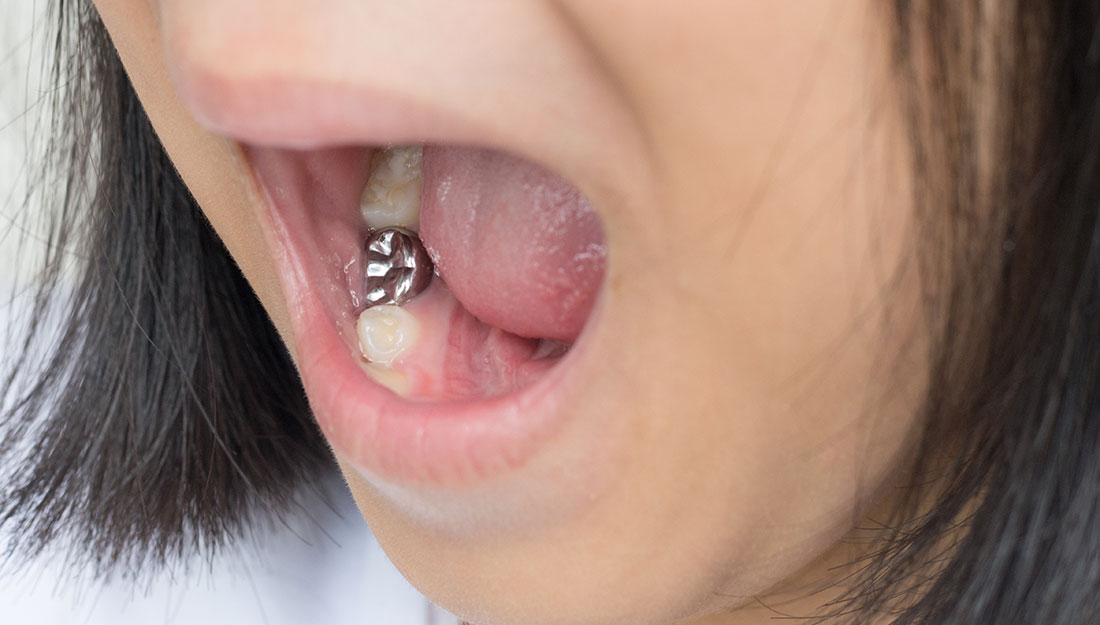As a parent, ensuring your child’s dental health is a top priority. When faced with the need for pediatric dental crowns, it’s natural to have questions about which type is best. Stainless steel and zirconia crowns are the two most common options for restoring damaged or decayed primary teeth. Both offer durability and protection, but they have key differences in aesthetics, longevity, and cost. In this post, we’ll explore the pros and cons of each type to help you make an informed decision for your child’s smile.
What Are Pediatric Dental Crowns?
Pediatric dental crowns are protective caps placed over a child’s damaged tooth to restore its shape, function, and strength. These crowns are typically recommended when a tooth has significant decay, a large filling, or after a pulpotomy (a procedure similar to a root canal for primary teeth). Crowns help preserve the baby tooth until it naturally falls out, ensuring proper spacing for permanent teeth.
Stainless Steel Crowns: The Traditional Choice
Stainless steel crowns (SSCs) have been a trusted choice in pediatric dentistry for decades. They are made from a strong, silver-colored metal alloy and are widely used for restoring primary molars.
Benefits of Stainless Steel Crowns
- Durability and Strength: SSCs are incredibly strong and can withstand the chewing forces of young children. They rarely break or chip, making them a long-lasting option.
- Cost-Effective: Compared to zirconia crowns, stainless steel crowns are more affordable. This makes them a popular choice for parents concerned about cost while still ensuring their child’s teeth are protected.
- Quick and Easy Placement: Stainless steel crowns require minimal tooth preparation, meaning the procedure is quicker and less invasive for your child.
- Highly Functional: SSCs effectively protect and support teeth that have undergone significant decay or treatment, allowing them to function normally until they naturally fall out.
Drawbacks of Stainless Steel Crowns
- Aesthetic Concerns: The most noticeable downside of SSCs is their metallic appearance. Because they are silver, they do not blend with natural teeth, which may be a concern for parents and children.
- Potential for Allergic Reactions: While rare, some children may have sensitivities to metals used in stainless steel crowns.
- Not Ideal for Front Teeth: Due to their color, stainless steel crowns are primarily used for molars rather than front teeth.
Zirconia Crowns: The Aesthetic Alternative
Zirconia crowns are a newer option in pediatric dentistry and have become increasingly popular due to their natural appearance. Made from a ceramic material, zirconia crowns are tooth-colored and blend seamlessly with natural teeth.
Benefits of Zirconia Crowns
- Superior Aesthetics: Zirconia crowns closely resemble natural teeth, making them the preferred choice for parents who want an aesthetically pleasing solution, especially for front teeth.
- Metal-Free and Biocompatible: These crowns are completely metal-free, making them an excellent option for children with metal allergies or sensitivities.
- Durability: While not as flexible as stainless steel, zirconia crowns are still highly durable and resistant to wear, chipping, and staining.
- Smooth Surface for Better Hygiene: The smooth, polished surface of zirconia crowns resists plaque buildup, which can contribute to better overall oral health.
Drawbacks of Zirconia Crowns
- Higher Cost: Zirconia crowns are more expensive than stainless steel crowns, which may be a concern for families on a budget.
- More Tooth Reduction Required: Unlike stainless steel crowns, zirconia crowns require more of the natural tooth structure to be removed for proper placement, which may not always be ideal.
- Potential for Fracturing: While durable, zirconia crowns are more prone to cracking or breaking under excessive pressure compared to stainless steel crowns.
Which Crown Is Right for Your Child?
The choice between stainless steel and zirconia crowns depends on several factors, including the location of the tooth, your budget, and your child’s specific dental needs. Here’s a general guideline:
- For back molars: Stainless steel crowns are often the best choice due to their strength and cost-effectiveness.
- For front teeth: Zirconia crowns are preferred because they provide a natural appearance.
- For children with metal allergies: Zirconia crowns are a safer, biocompatible option.
- For parents prioritizing aesthetics: Zirconia crowns offer a more visually appealing result.
- For families seeking a budget-friendly option: Stainless steel crowns provide excellent durability at a lower cost.
Conclusion
Both stainless steel and zirconia crowns serve the same essential purpose—protecting and restoring your child’s teeth. While stainless steel crowns offer affordability and durability, zirconia crowns provide a more natural look and are metal-free. The best choice depends on your child’s specific needs and your preferences as a parent.
If you’re unsure about which type of crown is right for your child, our team at Sweet Tooth Kids Dentistry is here to help! Schedule an appointment with us today, and we’ll guide you through the best options for your child’s oral health and smile.

